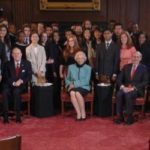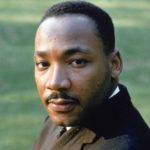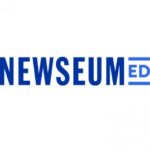This lesson will focus on freedom of assembly, as found in the First Amendment. Students will consider the importance of the right to assemble and protest by analyzing cases where First Amendment rights were in question. Using the case National Socialist Party of America v. Village of Skokie, students will consider if the government is ever allowed to control the ability to express ideas in public because viewpoints are controversial, offensive, or painful. Students will use primary sources and Supreme Court cases to consider whether the courts made the correct decision in the National Socialist Party v. Skokie case. Students will be able to form an opinion on the essential question: Is the government ever justified to restrict the freedom to assemble?
IRL 1: Free Speech in Schools Podcast
We’re digging into four incredibly important Supreme Court cases – four cases that have shaped how we interpret the meaning of free speech in public schools. Is political protest allowed in class? Is lewd speech covered by the First Amendment? Can school administrators determine what students can and can’t say in the school newspaper? Listen in, and find out how students and schools have gone head to head over how First Amendment rights apply in a public school setting.
The Amendments That Got Away
Students explore the constitutional amendment process, learn about three amendments that were not ratified, and simulate a state-level ratification process. The lesson fits into a variety of courses, including government, law, civics and history.
Is the System Fair?
Throughout U.S. history, Americans have silently stewed and actively protested that presidential elections are unfair and fixed against them. Do they have a point?
A Conversation on Freedom of Speech

Justices Stephen G. Breyer, Anthony M. Kennedy and Sandra Day O’Connor and students discuss the First Amendment’s right to free speech, and in particular students’ free speech rights in the Supreme Court cases Tinker v. Des Moines Independent Community School District and Morse v. Frederick. In the Tinker case, students wore black armbands to school in silent protest of the Vietnam War. In the Morse case, a student held up a sign that said “Bong HITS 4 Jesus” at a parade.
Different Perspectives on the Civil Rights Movement
Anthony Badger uses the career of President Jimmy Carter to frame the questions of change in the American South and the relative impact that economic modernization, nonviolent protest, and armed self-defense had on the end of segregation and the steps taken toward political and social equality. Free registration for students and teachers required to access resource.
African American Religious Leadership and the Civil Rights Movement
The modern Civil Rights Movement was the most important social protest movement of the twentieth century. People who were locked out of the formal political process due to racial barriers were able to mount numerous campaigns over three decades to eradicate racial injustice and in the process transform the nation. In its greatest accomplishment, the Civil Rights Movement successfully eliminated the American apartheid system popularly known as Jim Crow. Registration is required to view this resource. Free registration for students and teachers required to access resource.
Martin Luther King, Jr. and Nonviolent Resistance

By examining King’s famous “Letter from a Birmingham Jail” in defense of nonviolent protest, along with two significant criticisms of his direct action campaign, this lesson will help students assess various alternatives for securing civil rights for black Americans in a self-governing society. (Duration: 3 class periods)
The 2015 Baltimore Riots: A Teachable Moment

The Newseum believes that improving civic education has the power to improve our schools, communities and our democracy. The Baltimore unrest can be an entry point in your conversation with students.
The Newseum has numerous resources to help teachers broach this topic in the classroom. Lesson plans, videos and activities guide students in how civil rights issues have been represented in the media over many decades. And how citizens, including young people, can develop a voice and use the freedoms of the First Amendment to effect change and inspire action.